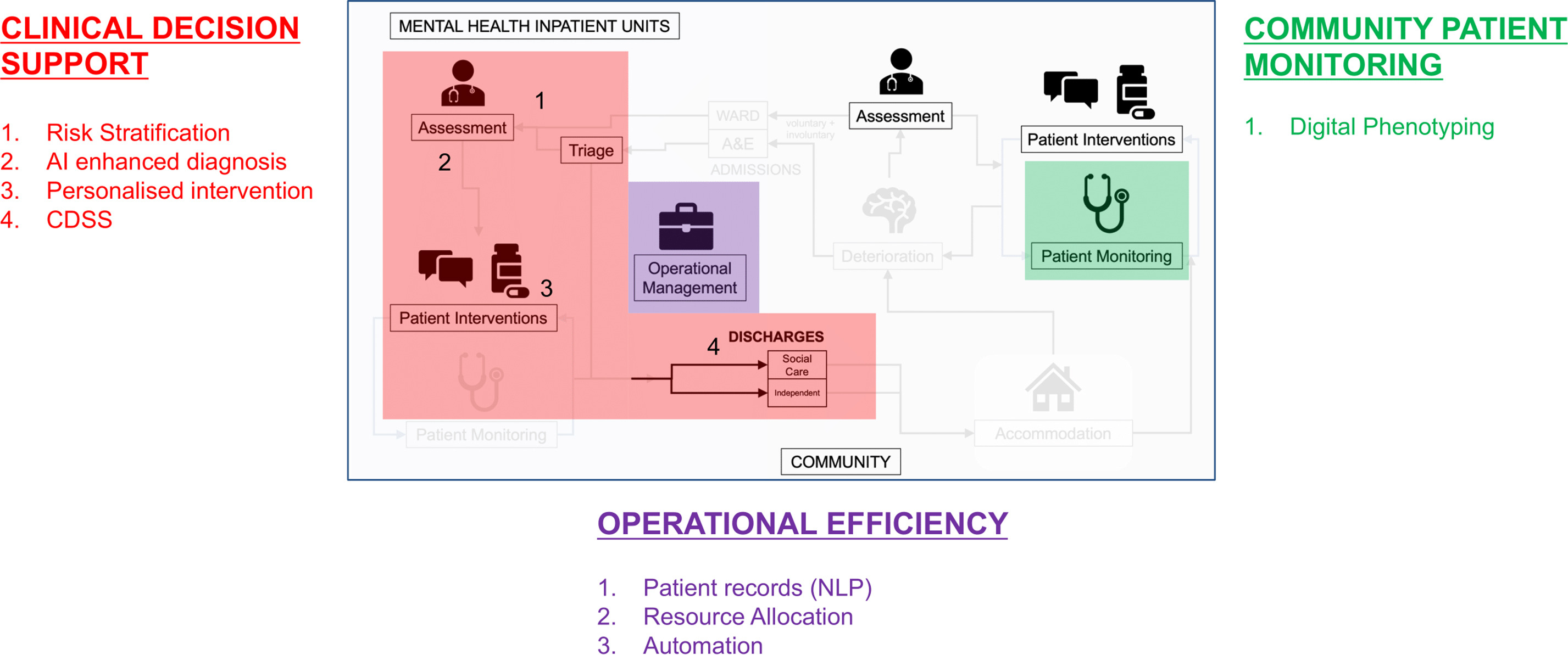Elsevier,
Community Mental Health Engagement with Racially Diverse Populations, May 2020, Pages 15-48
This book chapter advances SDG 3 and 10 by discussing the issues currently driving mental healthcare disparities in the Latinx population and how these approaches can provide a viable way to reduce them.
Introduction: Growing demand for mental health services, coupled with funding and resource limitations, creates an opportunity for novel technological solutions including artificial intelligence (AI). This study aims to identify issues in patient flow on mental health units and align them with potential AI solutions, ultimately devising a model for their integration at service level. Method: Following a narrative literature review and pilot interview, 20 semi-structured interviews were conducted with AI and mental health experts.
Diseases of the Nervous System (Second Edition), 2021, Pages 81-107
This book chapter advances SDG #3 and #10 by introducing the basic foundation of aging, dementia and Alzheimer Disease, including clinical presentation, diagnosis and epidemiology.
With the passing of Royal Decree-Law 16/2012, Spain's national health system switched from a model defined by universal and free health care principles, to a private insurance system that excluded large population groups. Based on a qualitative research design, this paper examines the media treatment of undocumented immigrants’ prerogatives to public health care in Spain (2012–2018).
The aim of this study was to compare the RAN pattern and skills of children with ID and low reading skills to the ones of TD children with matched reading skills.
This Research paper supports SDGs 3 and 10 by assessing ethnic differences in SARS-CoV-2 seropositivity among hospital workers. The findings showed that Black people had more than double the likelihood of SARS-CoV-2 seropositivity compared with White people, independent of age, sex, socioeconomic factors, and hospital role.
The EU Parliament voted to fast-track an inclusion of shipping into the EU Emissions Trading System (ETS) as of 2022. This white paper provides an in-depth analysis of maritime ETS and its impact on the shipping industry, contributing to SDGs 12 and 13.
Contributing to SDGs 9, 12 and 13, this paper provides an in-depth analysis of the technologies available to reduce CO2 emissions in those sectors, and the implications for introducing consistent measures to deliver on emission reduction targets.
Background: The population of older adults (ie, those aged ≥55 years) in England is becoming increasingly ethnically diverse. Previous reports indicate that ethnic inequalities in health exist among older adults, but information is limited by the paucity of data from small minority ethnic groups. This study aimed to analyse inequalities in health-related quality of life (HRQoL) and five determinants of health in older adults across all ethnic groups in England.
Background: Ambient air pollution is a major environmental cause of morbidity and mortality worldwide. Cities are generally hotspots for air pollution and disease. However, the exact extent of the health effects of air pollution at the city level is still largely unknown. We aimed to estimate the proportion of annual preventable deaths due to air pollution in almost 1000 cities in Europe.

